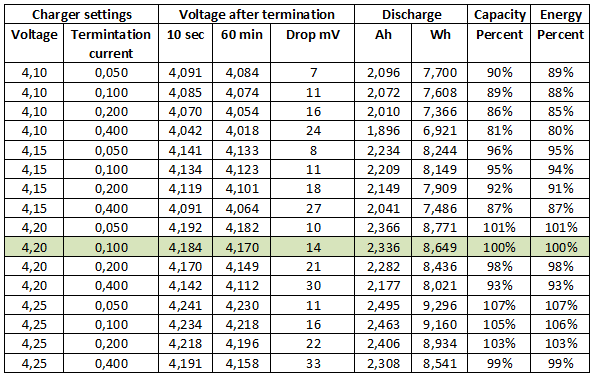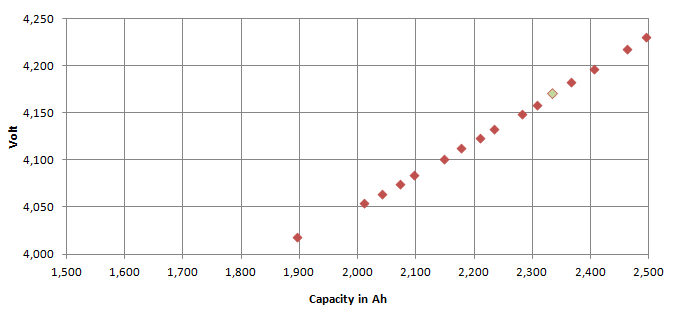In my charger reviews I often comment on a high termination current, and says that the battery will not be fully charger, but I do not specify more precise what that means.
In this test here I have taken a battery and charged it with many different charge settings and then measured the capacity and energy in the battery. All the measurements was done on automated equipment, i.e. voltage, current and timing was exactly the same in each test, except the charger termination setting.
For the test I have used a fairly new AW18650-26 cell:

The charger started at 1.3 volt and followed a perfect CC/CV curve until the specified limits.
After charging the battery rested for one hour.
The discharge was done at 1 ampere and stopped when the battery was down to 2.8 volt.
In the table the green line is what a typical hobby charger will do at the 1A LiPo setting.

Plotting the voltage after 60 minute versus capacity shows a very good correlation:

I hope to add a few other cells later on, but the test takes a long time and I need my equipment for some other stuff, i.e. it will be some time before I have time to add more cells.
My ideas for other cells are: A 16340 cell and a undefined older 18650 cell.
Note: The idea with this test it not to test a specific cell, but to see the consequence of different charger termination voltage/current.